Review: 2015 Subaru Outback 2.5i Premium

The SUV craze of the 1990s caught Subaru by surprise. The company simply did not have a product that everyone wanted. The North American division of Fuji Heavy Industries had no choice but to play the cards they were dealt. The engineers looked into the VW Golf Country 4×4 for inspiration, then took a Legacy wagon and lifted it, added some molding, big fog lights with mesh screens, and a roof rack. The marketing people ingeniously called it the Outback and hired the best known Aussie in America, Paul Hogan, to promote it.
The results of this marketing brilliance were sales that exceeded expectations, possibly saving the company. The Outback was such a huge hit Volvo and Audi followed suit and jacked up their own wagons, creating the Cross Country XC and the allroad quattro. At the 2014 New York International Auto Show, with yours truly in attendance, two models first dressed as vegan organic French-press coffee drinking hipster hikers, and later as that blissfully ignorant well-dressed couple that every thirty year old yuppie think they will always be, unveiled the fifth generation of the Outback.
Three inches taller, four inches longer, and five inches wider than the original, the new Outback is the same as the old Outback. Some found the styling of the new car lacking originality. Those are the same people who would have complained that Subaru killed a great product had the Outback looked any different. I was never a fan of the previous generation Legacy/Outback, so I found the new, dare I say more generic, look rather refreshing.
But Subarus have never been about looks. In fact I would go so far as to the say that most Subaru cars have been ugly in a cute way, sort of like a Pug or a Bulldog. Subarus have always been about functionality, reliability, all-weather traction, and price. The new Outback continues these traditions placing function over form and cost over perceived opulence. From the outside, the two-tone scheme of the original has been reduced, the fog lights got smaller, and the roof rack more pronounced but the two-box shape on stilts cannot be mistaken for anything other than an Outback.
Inside, functionality and simplicity triumphs, but its quality has significantly improved over the previous generations. The infotainment system is much improved, it is now easier to see, and simpler to use and set up. The test vehicle did not have a navigational system, but controlling the radio, phone, and auxiliary input devices is similar to using a Windows tablet. In the front of the center console is an auxiliary audio input and two USB ports (that’s two more than Audi). The audio system did sound pretty good, too, for what is essentially a base vehicle. Looking from inside out, at night, the headlights are not overly bright given the recent technical advances in headlight technology.
Dual zone climate controls are equally simple to use, but there are no vents for rear passengers. There are cup-holders in the center console, bottle holders in the doors, big door pockets, sunglass holder on the roof, a simple covered cubby for phones, and a large glove box. It’s these little things that make daily life easy and it’s amazing how many automakers cannot get that right (I’m looking at you Range Rover). Nothing is perfect, however, and my eight year old daughter, who reads a dozen books a week, completely wrote the Outback off for not having reading lights for rear passengers.
The front seats are comfortable, but the headrests could use a rake adjustment and bottom cushions could be longer. Someone at Subaru finally figured out that heated seat buttons are invisible when they are located under the center armrest and moved them to climate control panel. The rear bench is wide with plenty of leg and head room. The seatback is split 60:40, but there is no center pass-thru, so skiers with more than two rear passengers have to use the meaty-looking roof rack. That roof rack itself is functional, too, with standard cross-bars that slide and fold into the rails when not in use. There are also four tie down loops which can secure up to 150 pounds of cargo.
With high ground clearance and a high center of gravity, Subaru did not intend to make a driver’s car out of the Outback. The 2.5-liter pancake engine also won’t impress anyone with its 175hp and 174 lb-ft of torque. Worse, this engine is attached to a continuously variable transmission. This powertrain combination makes buzzy and whiney noises turning an otherwise quiet cabin into a noisy one. For that noise buyers are rewarded with fuel economy of 25mpg in the city and 33mpg on the highway, which was once considered excellent for a small econobox. Despite all that, the Outback somehow manages not to be a soulless appliance and is somewhat fun to drive. Perhaps it’s the car-like seating position and the jacked-up ride height, along with suspension tuned to nicely absorb the winter ridden roads, that create the feeling of being a rally driver.
Subaru makes a big deal of their AWD system, so it was a nice coincidence that the Northeast got hit with a big snow storm while the Outback was in my possession. It is common knowledge that tires are the most important thing in winter driving but this car was equipped with a set mediocre Bridgestone Dueler H/P Sport. Automakers like to use these tires because they are cheap, quiet, comfortable, and last long. I have personally had some bad experiences with these tires, so I was very cautions driving the Outback in the snow. To my surprise, the big wagon proved capable; granted the snow was packed and it wasn’t deep. In an empty lot near my work I turned the hoon knob up a little and even then, with stability control off, the vehicle stayed totally composed and controllable. There is a good reason why New England and Denver are Subaru’s biggest markets – with a proper set of snow tires this would be an amazing winter vehicle.
The test vehicle was equipped with Subaru’s EyeSight system, which is optional on all but the base Outback. The system works off two cameras mounted between the rear view mirror and the windshield. The system is able to detect speed differentials, brake lights, pedestrians, and bicycles. It has the ability to cut power, apply brakes, and bring the vehicle to a complete stop, if not avoiding an accident completely, than at least minimizing the impact. It tells those who bury their heads into their phones at traffic lights that the vehicle in front has moved. When reversing, it calmly alerts you that a vehicle is coming from the side. The whole system can be fully disabled for those with mad driving skillz, but for the majority of buyers this is a no-brainer option – it can protect the not only vehicle occupants but everyone else on the road, too, and will likely repay for itself in the first near-hit.
The base Outback, steel wheels and all, starts at about $26,045. The 2.5i Premium model seen here starts at $27,295. EyeSight with power tailgate package is $1695, mirror compass is $199, and rubber floor mats are a bargain at $72. For some reason Subaru charges a mandatory $300 for the vehicle to meet the Partial Zero Emissions Vehicle standard. Total price, with destination charges, is a very reasonable $30,111. Other options on the 2.5i Premium are sunroof and a nav system. Limited model comes with leather and the 3.5R Limited has more powah!
For thirty grand, the mid-level Outback gives you large SUV functionality, solid reliability, and all-weather traction while not looking like a cookie-cutter CRA-V4. Fun-to-drive factor, latest and greatest safety systems, and good gas mileage are the icing on this frosty cake. I was surprised by home much I liked this Outback and I would put it high on my shopping list of two-row SUV-ish vehicles, along with the Grand Cherokee and the 4Runner.
Kamil Kaluski is the East Coast Editor for Hooniverse.com. His ramblings on Eastern European cars, $500 racers, and other miscellaneous automotive stuff can be found there. He is known to enjoy organic coffee made in a French press, day hikes, and nights out on the town. He has yet to find one ideal vehicle for all those activities.
Subaru of America, Inc. provided the vehicle for the purpose of this review.

More by Kamil Kaluski
Latest Car Reviews
Read moreLatest Product Reviews
Read moreRecent Comments
- TheEndlessEnigma Poor planning here, dropping a Vinfast dealer in Pensacola FL is just not going to work. I love Pensacola and that part of the Gulf Coast, but that area is by no means an EV adoption demographic.
- Keith Most of the stanced VAGS with roof racks are nuisance drivers in my area. Very likely this one's been driven hard. And that silly roof rack is extra $'s, likely at full retail lol. Reminds me of the guys back in the late 20th century would put in their ads that the installed aftermarket stereo would be a negotiated extra. Were they going to go find and reinstall that old Delco if you didn't want the Kraco/Jenson set up they hacked in?
- MaintenanceCosts Poorly packaged, oddly proportioned small CUV with an unrefined hybrid powertrain and a luxury-market price? Who wouldn't want it?
- MaintenanceCosts Who knows whether it rides or handles acceptably or whether it chews up a set of tires in 5000 miles, but we definitely know it has a "mature stance."Sounds like JUST the kind of previous owner you'd want…
- 28-Cars-Later Nissan will be very fortunate to not be in the Japanese equivalent of Chapter 11 reorganization over the next 36 months, "getting rolling" is a luxury (also, I see what you did there).



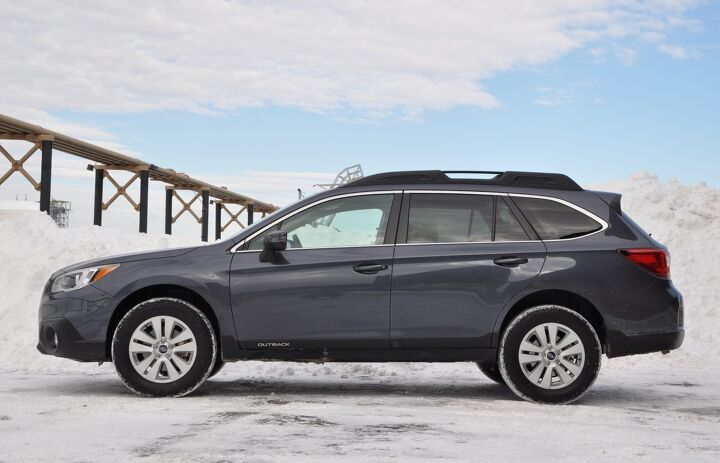




















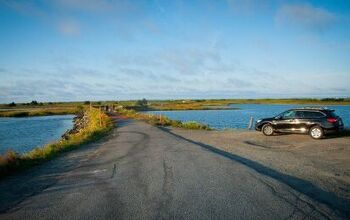
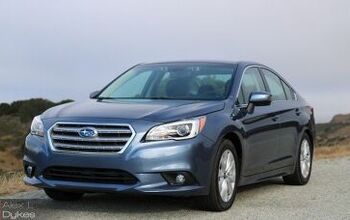
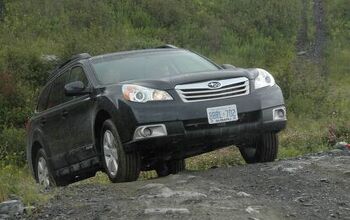
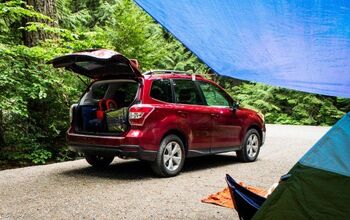
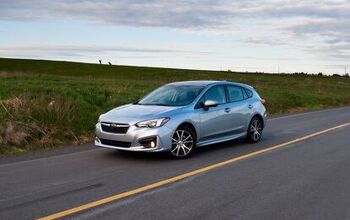










Comments
Join the conversation
Currently in a 9-3 wagon and at some point in future will need to replace it. Have an X1 and to my surprise i like the slightly rAised suspension, gives one some clearance and its easier to get in and out with kids. Outback appears the logical choice but they really are missing an engine, the Saab 2T is a tremendous mill. So i'd be looking at the H6 in the top trim (sans extra safety doodads). Runs about $43k in Canada, is there anything else one would consider?
The wife and I had an 03 Legacy sedan. It was a decent car, very few issues in 4 years. It felt like 1995 inside though. The 4 spd auto wasn't well suited to the car. Very wide gearing made the car rather pokey and any grade on the highway would cause it to downshift. But what killed me was the fuel mileage. The hills of Pittsburgh are not kind to any car in terms of fuel economy. Even driving conservatively, at least 2 mpg below the EPA rating (I know) in just about any vehicle I've owned. But the Subie was terrible, so much that I was sure something was wrong with it, though the dealer never found anything. 15-17mpg in town, 25 on the highway. Even twelve years ago, these were bad. Our giant '14 Odyssey returns these numbers now, though it does have 6 gears and cylinder management. A friend of hers had an 02 Forester, which I'm pretty sure was the same drivetrain. It felt lively and didn't return that bad fuel mileage. It also died at 105k. Another friend just had her 05 Forester die suddenly, about the same miles. Both of them took good care of their cars by all accounts. I don't like the CVT, so no more Subies for us. And the above experiences. I liked the Subaru from around 05-09. The styling was clean, but anonymous. The interiors were much improved, though not as good as now. The model line-up probably the most desirable.